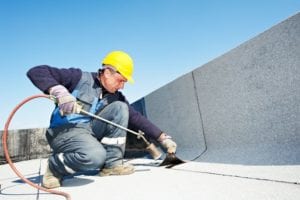
What Are the Most Common Roof Obstructions?

- Problems with flat build-up roofs – alligatoring (small cracks on the roof surface caused by prolonged exposure to UV radiation that makes the roof look like alligator skin), roof shrinkage (the pulling away of the topmost membrane from the sides, caused by aging, exposure to heat and UV radiation or improper installation) and the punctures caused by impact, such as hail or sharp stones, twigs and branches falling on the roof are the most common issues encountered on BUR systems;
- Ponding water – a universal issue that can affect any type of roof and is usually caused by improper roofing design or the damage sustained by the roof’s support structure that causes roof sections to sag and to allow water to accumulate;
- Flashing problems – the stripes of material installed in roof valleys, in the areas where two roof sections meet or around roof openings, such as the chimneys or the skylights, are very sensitive parts that need special attention. Improperly installed flashing stripes or aged, cracked or deformed flashing will let water through, causing leaks and damaging the roof structure. No matter the roofing problem, an expert Dallas roofer can help repair all the above problems, or do a complete replacement.


 Texas is a state that has varied geography, each of its geographic regions having its own, very distinct climate. Texas climate varies from humid in the eastern part of the state to subtropical and arid and what makes the state’s climate even more complex is the high occurrence of tornados and other extreme storms on the entire territory of the state.
Texas is a state that has varied geography, each of its geographic regions having its own, very distinct climate. Texas climate varies from humid in the eastern part of the state to subtropical and arid and what makes the state’s climate even more complex is the high occurrence of tornados and other extreme storms on the entire territory of the state.
















